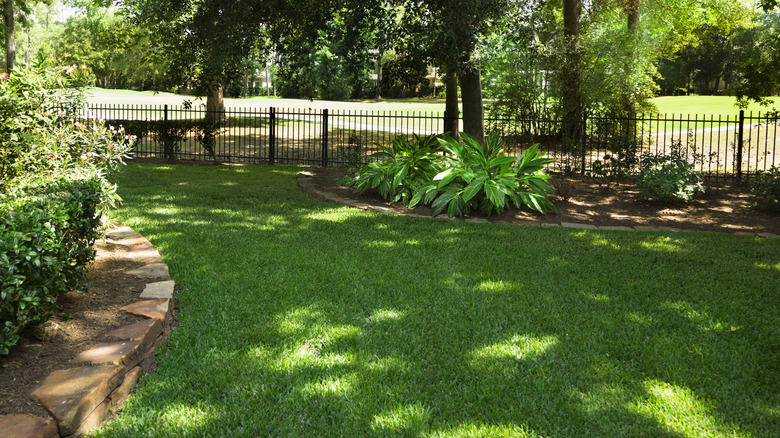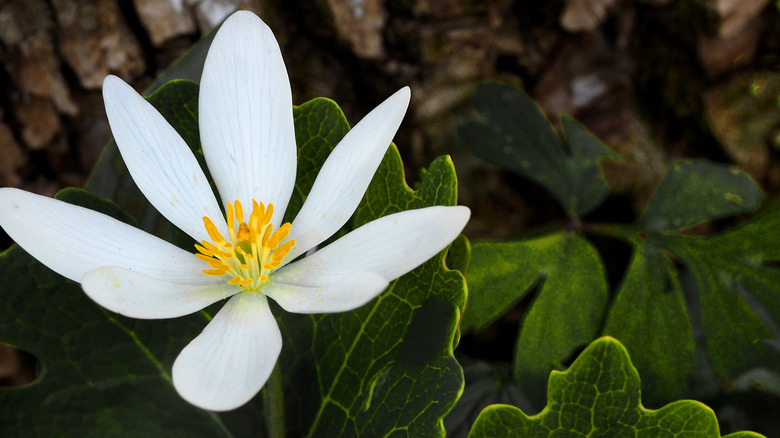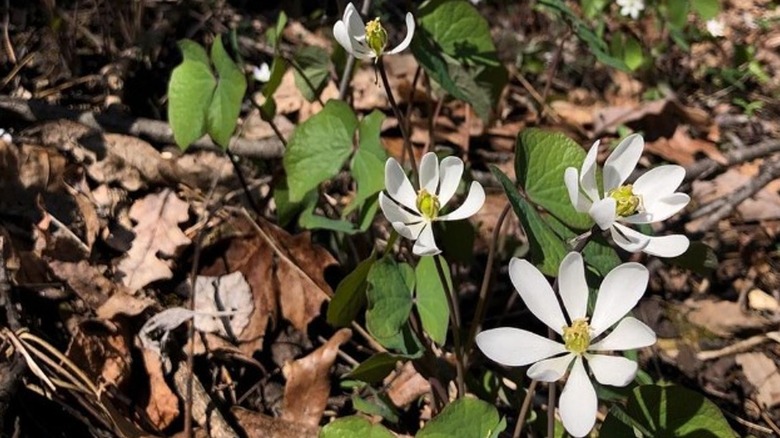The Beautiful White Wildflower That'll Thrive In Your Shade Garden
Many people dream of having a picture-perfect garden just outside their doorstep, with the total money and time invested into gardening for most people continuing to grow year after year (per Axiom). But no matter how hard you try to keep up with your garden, some of the most important factors can be outside of your control. For example, the angle of your house may block sunlight from reaching your garden, or an old oak tree may cast heavy shade over your whole backyard. In general, you'll have a more successful garden if you choose plants that can tolerate your natural environment, but it can be challenging to find beautiful flowers that grow perfectly in shade. Many flowering plants, especially native ones, prefer full or partial sunlight and will provide their best blooms only in ideal light conditions. But if you have a dark, shady backyard, you're not completely out of luck, as one flowering plant will thrive in the cool corners of your garden space: the twinleaf flower.
Named for its uniquely-shaped twin leaves, the twinleaf is a happy camper when it comes to shady conditions. Plus, it's native to North America and provides eye-catching white blooms with yellow centers. Here's why twinleaf is an excellent choice for shady gardens and how you can help this elegant plant thrive in your yard.
Twinleaf will make you do a double-take
Twinleaf, or Jeffersonia diphylla, is a herbaceous perennial plant that is native to North America. More specifically, this plant thrives in the eastern half of the United States, from Minnesota to New York and down to Alabama and Georgia. Besides Jeffersonia diphylla, the only other species of twinleaf in the world, Jeffersonia dubia, is found in Japan, so this native North American plant is really quite special. Jeffersonia diphylla is hardy in USDA zones 4 to 9 and grows to be just under 18 inches tall, making it one of the coolest ground cover plants that thrive around tree roots.
Twinleaf plants have a unique look because their leaves mirror each other, almost like a pair of lungs or the wings of a bright green butterfly. The flowers of twinleaf appear in April through May and look like one crisp white flower with about eight oblong, rounded petals and a yellow center. Each flower grows on its own leafless stalk, which juts out from the leaves of the plant. The bright white blooms make twinleaf an excellent aesthetic choice for shady areas, where they can reflect some light and joy into the space. These blooms can also attract pollinators to your garden. Historically, Native Americans used this plant for medicinal treatments, but some now believe that it could be toxic, so it's best to keep this as an ornamental flower.
Growing and encouraging twinleaf flowers
Because it is native to the United States, caring for a twinleaf plant in your garden is pretty simple. This low-maintenance plant needs moist and well-draining soil, and it won't tolerate scalding sunlight or droughts very well. A location with less than 3 hours of bright light per day is ideal, so your twinleaf should only receive direct sunlight during sunrise or sunset, if at all. It's actually better to over-shade your twinleaf than to under-shade it. This is because twinleaf plants are resilient in heavy shading, so they'll thrive beneath trees, shrubs, and other vegetation and grow into dense, bushy groundcover.
Getting your twinleaf to bloom shouldn't require too much effort on your part, as long as the right environmental conditions are met. Prepping your soil for successful planting can help to ensure your twinleaf has the nutrients it needs to bloom. These plants prefer the soil to be slightly-acidic and rich in organic matter, so adding organic compost to your garden bed is a good way to encourage blooms. Water your twinleaf plant regularly to keep the soil moist but never soggy. Guard against rabbits if needed, and stay persistent with weed removal so your twinleaf doesn't have to compete for space in the garden. If all goes well, the blooms will produce pitcher-like capsules that pop open when ripe and contain seeds, which you can replant if desired.


